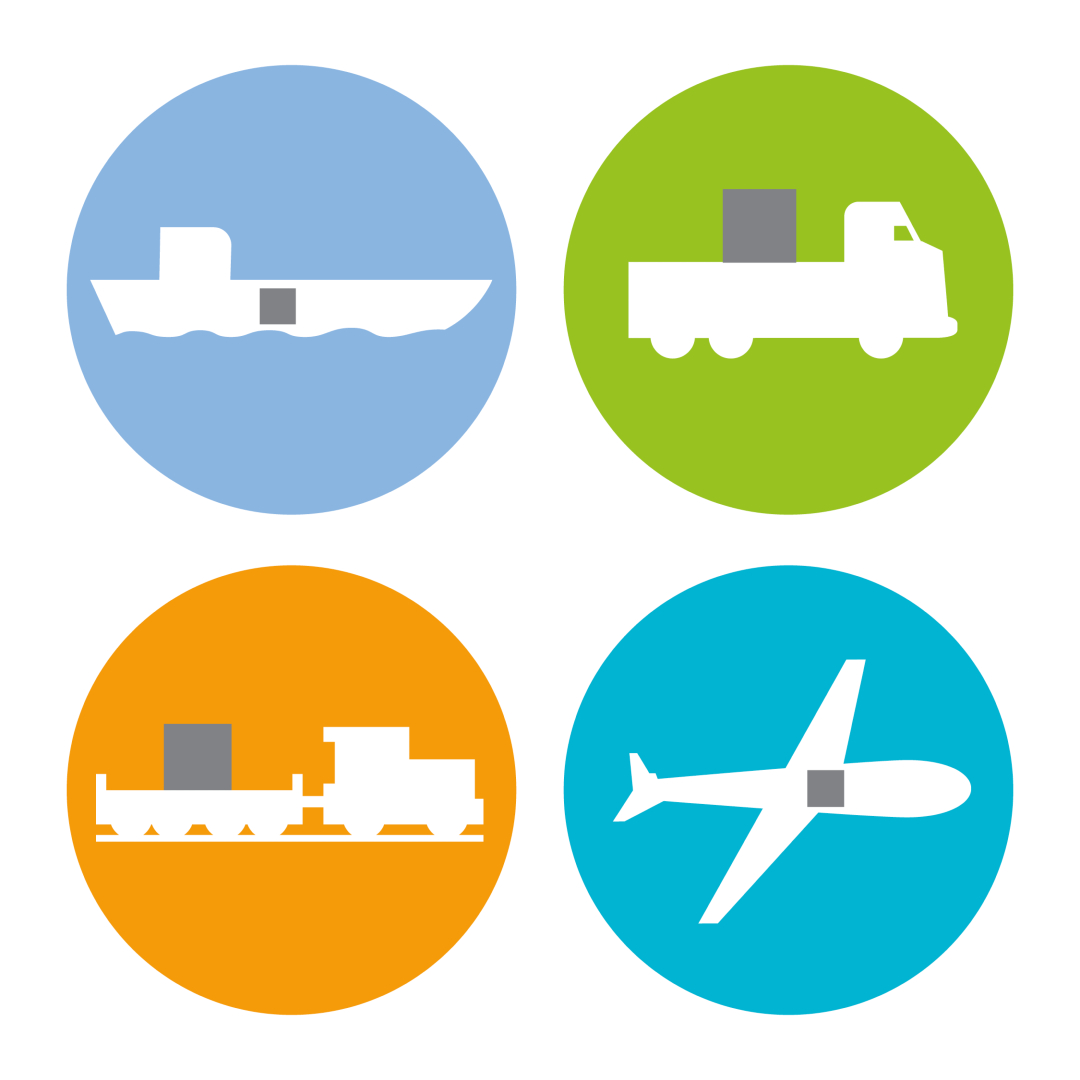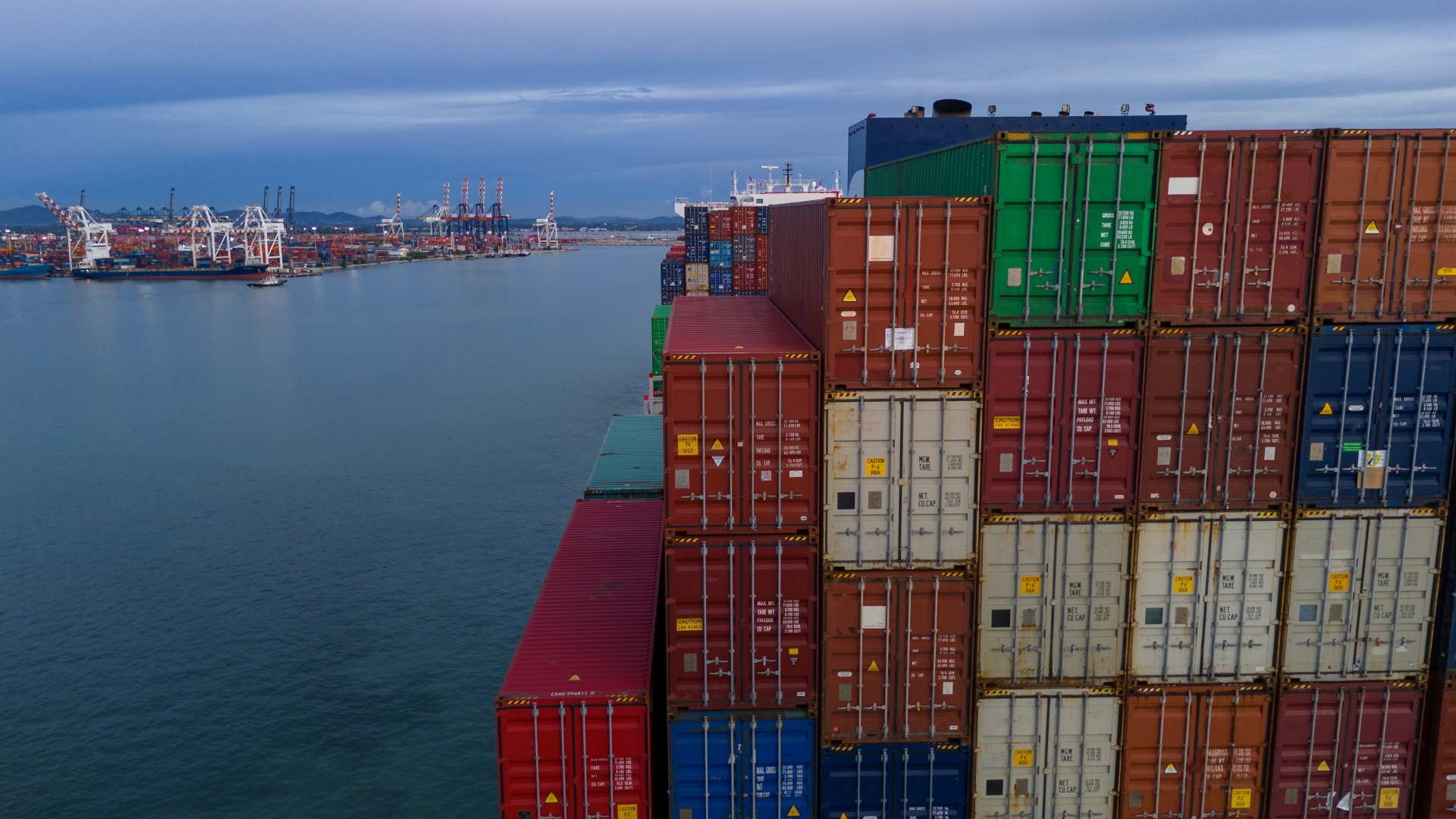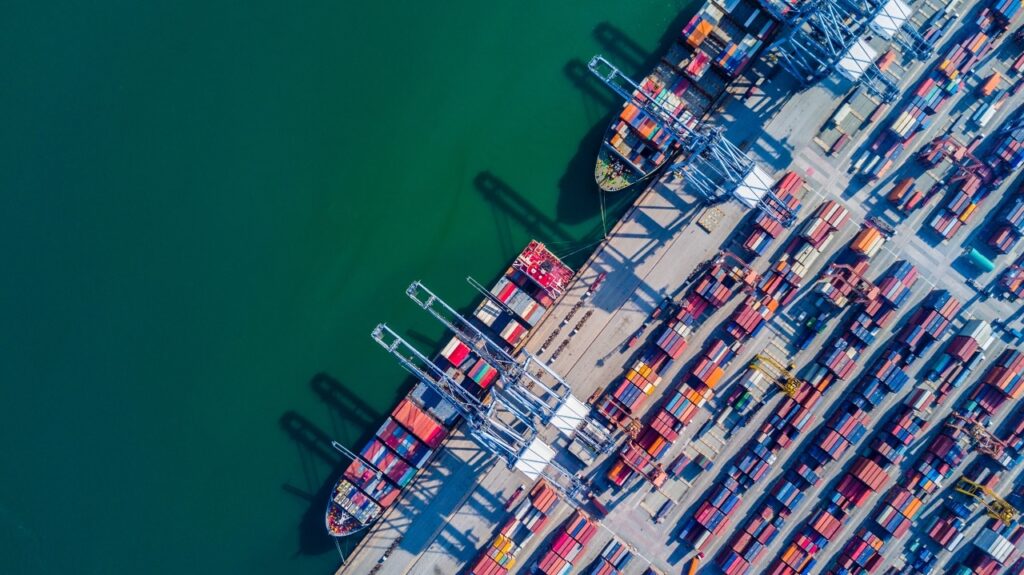In this article, Miguel Angel Bustamante Morales discusses the key differences between the Incoterms® rules, DPU and DAP.
Miguel is an ICC certified trainer on the Incoterms® 2020 rules and an active participant in the last three revisions of the Incoterms® rules: 2000, 2010, and 2020.
The views and opinions expressed in this article are those of our authors and do not necessarily reflect the official policy or position of the ICC Academy or ICC.
The Incoterms® rules are a set of trade rules created by the International Chamber of Commerce (ICC) in 1936. The rules are reviewed and updated from time to time, with Incoterms® 2020 being the latest one.
The Incoterms® rules provide standardised international trade terms for sellers and buyers, clarifying key aspects of a B2B goods sale contract, such as the delivery location and the transfer of risks for loss of or damage to the goods from seller to buyer.
Each of the eleven rules provide clarity on:
- The place and point of delivery of the goods, as well as the transfer of risks for loss or damage.
- The costs to be borne by seller and buyer.
- Responsibility for arranging the transportation of the goods, including compliance with security requirements.
- Responsibility for insurance coverage of the goods, in the case of CIP and CIF.
- Allocation of duties related to completing export and import formalities (and any transit customs procedures).
- Accountability for packaging, marking and the certifications of quality or weight of the goods.
In this article we will focus on just two of the rules: DPU and DAP, including when each of them should be used and their key differences and similarities.
Explore our Incoterms® rules knowledge hub, find content related to the different rules and insightful use cases.

Incoterms® 2020 Certificate
DPU and DAP
Deciding between DAP and DPU in a trade transaction depends on numerous factors. But let’s start with some common features shared by these two Incoterms® rules.
- Both DAP and DPU are delivery terms, meaning the seller is obligated to deliver the goods to the agreed place and point of destination.
- In both DAP and DPU, ‘delivery’ and ‘destination’ hold the same meaning*.
- Both terms require the seller to arrange and pay for the transportation of the goods and bear the risk for loss or damage throughout the entire transportation journey.
- Both are suitable for any mode of transportation or multimodal shipments (involving at least two different transport modes).
- Both impose on the seller the responsibility for completing export formalities and if needed, customs transit procedures through third countries.
- Both make the buyer responsible for completing import formalities.
- Both may be appropriate for door-to-door delivery, provided the buyer understands that import custom formalities are at their own risk and expense.
*In DAP and DPU, ‘delivery’ and ‘destination’ hold the same meaning because the seller undertakes to deliver the goods to the agreed destination. This contrasts significantly with the Incoterms® rules of the “C” group. An example helps us illustrate this difference: Consider CIF Shanghai Port, China, Incoterms® 2020 and DAP Shanghai Port, China, Incoterms® 2020, with the seller located in Central Europe. Both Incoterms® rules specify the same destination, but their functionality regarding delivery and risk transfer differs.
Under CIF Shanghai, the seller’s obligation is to ship the goods from the designated port of shipment, for instance, the Port of Rotterdam. The seller is not required to deliver the goods to the named port of destination (Shanghai Port). The seller “delivers” the goods and transfers the risks of loss or damage when the goods have been loaded onto the vessel at the Port of Rotterdam. Once the goods are on board, the seller’s responsibility ends. Whether the goods arrive at the destination (Shanghai Port) is no longer the seller’s concern – as between seller and buyer, the buyer bears the risk of transport.
In contrast, DAP Shanghai obligates the seller to deliver the goods to the agreed destination, in this case, the Shanghai Port. The seller retains the risk for loss or damage of the goods until they reach this destination. This key difference highlights that Incoterms® rules of the “C” group do not require the seller to deliver the goods to the destination, instead, they mandate shipment from the designated port and the payment of transportation costs to the destination.
However, with “D” group Incoterms® rules such as DAP, the seller must ensure the goods are delivered at the agreed destination. This distinction underscores the higher level of responsibility assumed by the seller under DAP compared to CIF.
So, when is it right to use DPU or DAP if both terms share similar features?
To better understand this, we will explain both terms in more depth. Explore this and other key insights related to the “D” terms in the Incoterms® rules.
Understanding DPU (Delivered at Place Unloaded)
A straightforward and practical definition of the Incoterms® rule DPU is as follows: DPU signifies that the seller undertakes to deliver the goods and transfer the risk of loss or damage at the designated place and point of destination. This includes unloading the goods from the arriving mode of transport and making them available to the buyer. The agreed place of destination is typically located in the buyer’s country.
For example, if the seller and buyer have agreed on a sales contract as: DPU, Le Havre Port, France, Refrigerated Terminal, Incoterms 2020, this means the seller is responsible for delivering the goods to the refrigerated terminal at the Port of Le Havre in France. It is important to note that all loading and unloading manoeuvres during transportation up to the agreed delivery point are at the seller’s risk and expense.
The buyer assumes responsibility for taking delivery of the goods, including the transfer of risks for loss or damage and associated costs, once the seller has provided notice enabling the buyer to collect the goods at the designated place and point of delivery. In this hypothetical case, this would occur at the refrigerated terminal of the Port of Le Havre, France.
The buyer is responsible for completing import custom formalities and arranging any onward transportation of the goods – typically to buyer’s premises — beyond the agreed named destination.
Why was DPU was included in the 2020 version of the Incoterms® instead of DAT? The key reason is that DAT was limited to delivery at a ‘terminal’ (though broadly defined) in the agreed place and point of delivery, such as a port, airport or train station terminal. In contrast, DPU allows the parties to designate any “place” for the delivery of the goods, not just a terminal, offering greater flexibility in defining the delivery location.
Basic obligations of the buyer and seller under DPU
- The seller is obligated to deliver the goods at the agreed place and point of destination, ensuring they are unloaded from the arriving mode of transport and made available to the buyer. This agreed delivery location is also where the transfer of risks and costs for loss or damage of the goods passes from seller to buyer.
- The seller is responsible for completing export formalities and if applicable, any customs procedures in transit. The buyer, in turn, must handle the import formalities.
- The seller must arrange and bear the cost of transporting the goods to the agreed place and point of destination, including the costs associated with unloading at that location.
- The seller should carefully assess whether they can safely unload the goods at the agreed place and point of destination. If unloading cannot be ensured, the DAP Incoterms® 2020 rule would be a more appropriate choice.
When do you use DPU?
DPU is appropriate in the following situations:
- The seller is willing to assume the risk of loss or damage of the goods for the entire transportation journey, up to the designated place and point of destination.
- The seller is confident in their ability to safely unload the goods at the agreed place and point of destination.
- The seller is prepared to handle not only export formalities but also customs procedures in transit countries that the goods must pass through.
- The buyer understands their responsibility to complete import formalities.
- The buyer is aware that they must assume risks of loss or damage to the goods from the point of delivery, and, if required, arrange any onward carriage to transport the goods to, for example, the buyer’s premises.
Understanding DAP (Delivered at Place)
A straightforward and practical definition of the Incoterms® rule DAP is as follows: DAP requires the seller to deliver the goods and transfer the risk of loss or damage at the designated place and point of destination. This is achieved by making the goods available to the buyer, ready for unloading from the arriving mode of transport. The agreed place of destination is typically in the buyer’s country.
For example, if the seller and buyer agree to a sales contract as: DAP, Changi International Airport, Terminal 5, Singapore, Incoterms 2020, it means the seller is obligated to deliver the goods to Changi Airport in Singapore.
Two important considerations:
- The risk of unloading the goods from the aircraft at Changi Airport in Singapore is the buyer’s responsibility.
- The cost of unloading the goods may or may not be included in the transportation contract arranged between the seller and the carrier. If it is not included, the buyer must bear this cost. To avoid misunderstandings, it is advisable to explicitly clarify this cost in the sales contract.
The buyer assumes responsibility for taking delivery of the goods, including the transfer of risks for loss or damage and associated costs, once the seller has provided notice enabling the buyer to collect the goods at the designated place and point of delivery. In this hypothetical case, this occurs upon the aircraft’s arrival at Changi Airport in Singapore, with the goods ready for unloaded from the aircraft.
The buyer is also responsible for completing import customs formalities and arranging any onward transportation of the goods from the contractually agreed place of destination, for example to the buyer’s premises.
Basic obligations of the buyer and seller under DAP
- The seller must deliver the goods to the agreed place and point of destination, ensuring they are ready for unloading from the arriving mode of transport. The designated delivery location is also where the transfer of risks and costs for loss of or damage of the goods shifts from seller to the buyer.
- The seller is responsible for completing export formalities and if applicable, any customs procedures during transit. The buyer, in turn, is responsible for handling import formalities.
- The seller must arrange and pay for the transportation of the goods to the agreed place and point of destination. The cost of unloading may or may not be included in the transportation contract.
- If the buyer requires the goods to be delivered at the agreed place and point of destination, already unloaded from the final mode of transport at the seller’s risk and cost, the DPU Incoterms® 2020 rule should be selected and explicitly stated in the sales contract.
When do you use DAP?
DAP is used:
- When the seller is prepared to assume the risk of loss or damage to the goods for the entire transportation journey, up to the designated place and point of destination.
- When the seller is willing to complete export formalities as well as customs procedures in transit countries the goods must pass through.
- When the buyer understands they are responsible for unloading the goods from the arriving mode of transport at the agreed place and point of destination.
- When the buyer is aware that they must handle import formalities.
- When the buyer acknowledges that they must assume the risk for loss or damage to the goods from the point of delivery and, if necessary, arrange for further transportation to any onward destination, such as their own premises.

ICC Handbook on Transport and the Incoterms® 2020 Rules
Comparative analysis of DPU and DAP
Based on this presentation on DPU and DAP, the comparative analysis highlights a fundamental but significant difference between these two Incoterms® rules: the responsibility for unloading the goods at the designated place and point of delivery.
What does this mean?
Simply put, DPU makes the seller responsible for the risk of loss or damage to the goods up to the agreed place and point of delivery, including unloading the goods at the seller’s risk and expense.
In contrast, DAP also holds the seller responsible for the risk of loss or damage of the goods up to the agreed place and point of delivery but excludes responsibility for unloading the goods from the arriving mode of transport. The cost of unloading may or may not be included in the transportation contract, so it is crucial for the parties to define this cost in the sales contract.
In summary, the unloading of the goods at the agreed destination is the defining difference between DPU and DAP.

ICC Digital Library
Use cases
For DPU, in detail:
The seller and buyer have agreed on a sales contract: DPU, Le Havre Port, France, Refrigerated Terminal, Incoterms® 2020.
The seller based in Colombia is shipping fresh flowers of different varieties packed in three 53-foot refrigerated containers.
The flowers were initially transported by truck from Bogotá, Colombia, to the port of Barranquilla, Colombia. There, the containers were loaded onto a vessel bound for the Port of Le Havre in France. The Colombian seller arranged the transportation under a multimodal transport contract, resulting in the issuance of a multimodal Bill of Lading due to the combination of two transport modes (truck and vessel) with a single carrier overseeing the entire journey.
The goods arrived on time at the Port of Le Havre in France, were unloaded from the vessel and transported to the refrigerated terminal within the port.
All loading and unloading manoeuvres during their transportation journey to the Port of Le Havre – the agreed place of delivery – were carried out at the seller’s risk and expense.
In accordance with article A10 of DPU Incoterms® 2020 rule, the seller notified the buyer that the three containers had arrived at the refrigerated terminal. At that moment, the seller transferred the risks for loss or damage of the goods to the buyer.
The buyer took delivery of the goods at the designated place and point of delivery, the refrigerated terminal at the Port of Le Havre. At this point, the buyer assumed all risks for loss or damage to the goods, as well as the associated costs.
The buyer then completed the import formalities, released the goods from customs and transported them to their final destination at their own risk and expense.
It is important to note that the method of payment is not governed by the Incoterms® rules but is instead a contractual agreement between the parties. However, as stated in article A1 of the DPU Incoterms® 2020 rules, the buyer is obligated to pay the price of the goods to the seller in accordance with the terms of the sales contract.
Now, let’s see a case with DAP in detail:
A seller in Gragnano, Italy, near Naples and a buyer in Singapore agreed on a sales contract for Fettuccine Pasta under: DAP, Changi International Airport,Terminal 5, Singapore, Incoterms 2020.
The seller contracted Singapore Cargo for air transportation from Italy to Changi International Airport and paid the freight cost, excluding the unloading cost at the airport.
The carrier issued an Air Waybill to the seller, which along with commercial invoice, certificate of origin, and certificate of quality, was presented to the seller’s bank in Italy. The bank honoured the payment under the documentary credit agreement after verifying a complying presentation.
Upon arrival at Changi International Airport, the carrier required the buyer to pay the unloading cost, as it was not included in the freight contract. According to article B9(b) of DAP, Incoterms® 2020, the buyer is responsible for such costs. The buyer paid the unloading fee, and the carrier released the cargo.
The buyer then completed the import formalities, cleared the goods from Changi Airport to their warehouse in Singapore.

Incoterms® 2020 English
Choosing the right Incoterms® rule
There is no “right or wrong” Incoterms® Rule’, but rather the appropriate rule for the specific circumstances of a trade transaction.
Whether opting for DPU or DDP, the seller and buyer, after carefully reviewing the information outlined above and applying insights gained from ICC Academy courses and certifications – based on the Incoterms® 2020, publication 723 – will be well-prepared to make informed decisions for their contracts.





